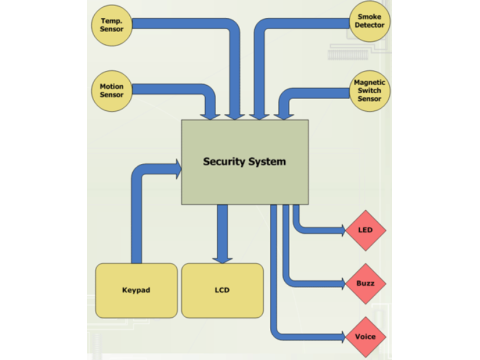Understanding Security Alarm System Layers: Perimeters and Zones
Security alarm systems are designed with protection layers, also known as "rubezhi" or security zones, to ensure comprehensive coverage. Each layer serves a specific function, enhancing the overall system's reliability and effectiveness.
What Are Security Alarm System Layers?
A security layer consists of a group of sensors (detectors) organized to address a specific type of threat. These layers help segment protection, allowing for precise monitoring and quicker response. Let’s explore the layers using a conceptual model.
Layer 1: Perimeter Security
The first layer protects the outer boundaries of a property. For buildings or rooms, this includes:
- Walls
- Windows
- Doors
- Ceilings and Floors
Examples:
- Banks or Jewelry Stores: May have two distinct perimeters—one for the general building and another for high-security zones like vaults.
Perimeter security is often implemented using devices such as:
- Magnetic-contact sensors for doors and windows.
- Break-glass detectors for windows.
- Vibration sensors for walls or other structures.
Layer 2: Internal Volumetric Protection
The second layer involves internal sensors that detect unauthorized movements or access within the building. This layer may include:
- Motion detectors (infrared or ultrasonic).
- Internal door sensors to monitor unauthorized access between rooms.
Specialized Features:
- Internal doors or entryways can act as "traps," triggering alerts if breached while the area is under surveillance.
Layer 3: Object-Level Protection
The third layer focuses on securing specific high-value items or areas, such as:
- Safes
- Display cases
- Art pieces or museum exhibits
Devices used for object-level protection include:
- Vibration sensors to detect tampering with safes or cabinets.
- Capacitive sensors for monitoring physical interaction with protected items.
Layer Integration and Usage
Security layers are commonly used in systems with:
- Centralized monitoring (Pultovaya Ohrana).
- GSM-based alarms sending notifications to mobile devices.
- On-site physical security.
Each layer can be monitored independently through separate control panel zones or GSM notification channels. This multi-layered approach ensures:
- Redundancy: If the perimeter fails, the volumetric layer serves as a backup.
- Certainty: Sequential activation across layers confirms genuine intrusion, reducing false alarms.
Key Benefits of Multi-Layer Security
- Enhanced Detection Reliability: Sequential triggers provide clear confirmation of unauthorized entry.
- Redundancy: If one layer fails, others compensate.
- Adaptability: Layers can be customized based on the property’s layout and security needs.
Conclusion
Multi-layered security alarm systems offer a robust and reliable approach to protecting properties and assets. By dividing protection into perimeter, volumetric, and object-specific layers, you can create a comprehensive security setup tailored to your specific needs. For more insights and equipment options, visit safsale.com

